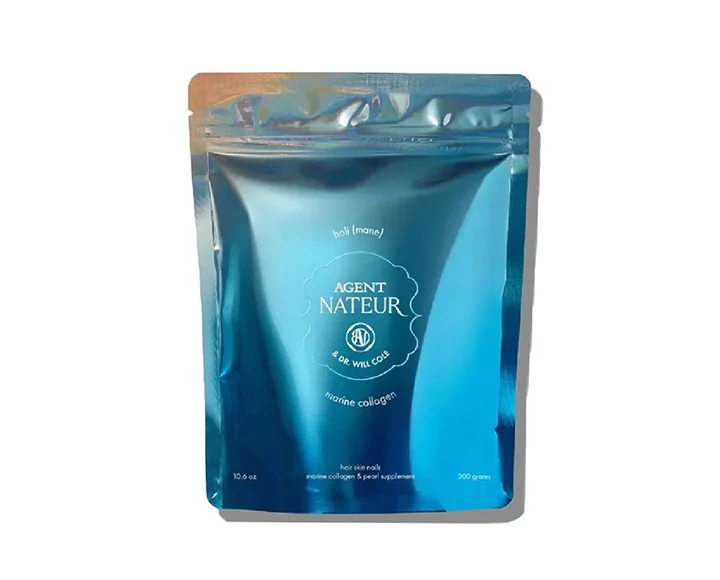We owe a lot to plants: they nourish our bodies, brighten our habitats and – most importantly – helps us breathe better inside them. While any kind of greenery will do some good, this study by NASA pinpoints the best air-purifying plants for our homes. We’re sharing a few of our least-likely-to-die faves for easy reference, and easier respiration.
No matter how clean we keep our casas, modern life means the quality of our air is inevitably compromised. There are plenty of ways to filter out toxins that are too close for comfort (check out five simple solutions here), but nothing quite compares to the mood-boosting, design-defining benefits of a few pretty plants.
Brush up on care tips here, pick out a few new babies below and don’t be shy: NASA recommends at least one plant per every 100-square feet of indoor space. We’re filling empty corners, boring bookshelves and every window sill we can find with these low-maintenance, air-purifying plants…
What’s In Our Air?
Trichloroethylene: Found in some soaps, perfumes, paints, lacquers, varnishes, adhesives, paint remover, printing inks, disinfectants and dyes. Symptoms associated with short term exposure include dizziness, headache, nausea and drowsiness.
Formaldehyde: Found in some paper bags, paper towels,facial tissues, table napkins, plywood panelling, synthetic fabrics, disinfectants and personal care products. Symptoms associated with short term exposure include irritation to nose, mouth and throat. Learn more about where formaldehyde lurks, and why it’s dangerous here.
Benzene: Used to make plastics, synthetic fibers, dyes, detergents, and pesticides, benzene can also be found in vehicle exhausts, glue, paint and furniture wax. It commonly enters the air through heating systems, cooking devices. Symptoms associated with short-term exposure include irritation to eyes, drowsiness, dizziness, headache, increase in heart rate and headaches.
Xylene: Found in leather, paint, cleaning agents and vehicle exhausts. Symptoms associated with short term exposure include irritation to eyes, drowsiness, dizziness, headaches, depression to the nervous system and possible liver and kidney damage.
Ammonia: Found in window cleaner, surface sanitizers, floor waxes, aerosols, fertilizers and even some food products (seriously. Read up here). Symptoms associated with short term exposure include eye irritation, coughing and sore throat.
Aloe Vera* | This little guy is perfect for a sunny kitchen window or dull office desk. Beyond its air-purifying abilities – which include clearing formaldehyde and benzene – the leaves contains a gel that’s full of vitamins, enzymes, amino acids and other elements that help heal cuts and burns, kill bacteria and reduce inflammation.
Golden Pothos* | This lush, leafy option removes formaldehyde, xylene, toluene, benzene and carbon monoxide from the air. It’s also as close to un-killable as plants come, flourishing in bright and low light alike. Simply water when the soil is dry and trim the strands when they grow too long.
Peace Lily* | NASA’s report says this year-round bloomer is the most effective at removing air pollutants, including benzene, formaldehyde, trichloroethylene, xylene, ammonia and acetone (emitted by electronics and found in certain cleaners). It adapts well to low light but requires weekly watering – just a splash will do!
Spider Plant | A fan of bright, indirect light, a spider plant will help remove formaldehyde, xylene and carbon monoxide from the air. As it grows, the plant will sprout baby versions called ‘spiderettes’ that can be cut off, placed in a pot and grown on their own. Spider plants prefer dry soil, so everything is going to be okay if you forget to water for a while.
Broadleaf Lady Palm | This leafy mini-tree is one of the best houseplants for clearing formaldehyde, ammonia, xylene and toluene out of the air. It’s able to tolerate low-levels of light (perfect for a dark corner), high amounts of water (perfect for an over-zealous plant parent) and a wide range of temperatures. Translation: these plants are very hard to kill-off.
Snake Plant* | This gorgeous plant removes benzene, formaldehyde, trichloroethylene and xylene from the air. It also absorbs carbon dioxide and releases oxygen at night (the opposite of the process most plants follow), making them an ideal addition to any bedroom. They prefer drier conditions and some sun, but don’t need much of it. Water occasionally and watch it thrive!
English Ivy* | Effective at clearing benzene, formaldehyde, xylene and toluene from the air, English Ivy also helps reduce mold and airborne fecal-matter particles. This plant is notorious for growing like crazy when it lives outdoors; it can easily be contained in a pot inside, but will probably keep growing whether you like it or not. It grows best with moist soil (so don’t be afraid to water) and access to four or more hours of direct sunlight each day.
Chinese Evergreen* | This plant thrives in low light and will grow in places where other plants won’t grow. Because it originates in tropical environments, it likes humid air (perfect for a bathroom!). If placing this plant in a space with dry air – you’ll be able to tell by browning tips – simply spritz the leaves with water every few days.
Dracaena* | This large group of houseplants comes in a variety of colors, shapes and sizes (there are more than 40 kinds!) and helps eliminate formaldehyde, xylene, toluene, benzene and trichloroethylene from the air. All you need to do to keep this plant alive is indirect sunlight and slightly moist soil. Try not to overwater, but don’t stress if you do; these babies are resilient.
* indicates that this plant is toxic to cats and dogs. If you’re a pet owner, be sure to keep these plants out of reach, and monitor for signs of irritation if ingested.













